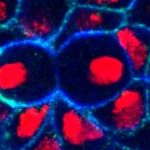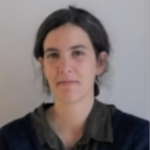Link to Pubmed [PMID] – 26016478
Link to DOI – 10.1371/journal.pcbi.1004245
PLoS Comput Biol 2015 May; 11(5): e1004245
The different actin structures governing eukaryotic cell shape and movement are not only determined by the properties of the actin filaments and associated proteins, but also by geometrical constraints. We recently demonstrated that limiting nucleation to specific regions was sufficient to obtain actin networks with different organization. To further investigate how spatially constrained actin nucleation determines the emergent actin organization, we performed detailed simulations of the actin filament system using Cytosim. We first calibrated the steric interaction between filaments, by matching, in simulations and experiments, the bundled actin organization observed with a rectangular bar of nucleating factor. We then studied the overall organization of actin filaments generated by more complex pattern geometries used experimentally. We found that the fraction of parallel versus antiparallel bundles is determined by the mechanical properties of actin filament or bundles and the efficiency of nucleation. Thus nucleation geometry, actin filaments local interactions, bundle rigidity, and nucleation efficiency are the key parameters controlling the emergent actin architecture. We finally simulated more complex nucleation patterns and performed the corresponding experiments to confirm the predictive capabilities of the model.

